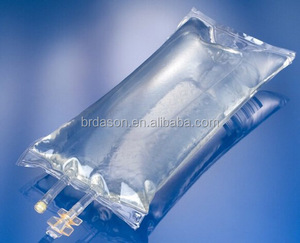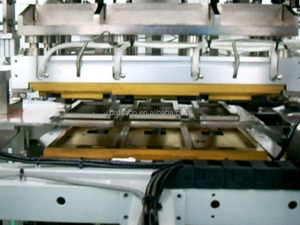
All categories
Featured selections
Trade Assurance
Buyer Central
Help Center
Get the app
Become a supplier

(8424 products available)

























Medical assembly machines are various pieces of equipment used to assemble medical devices. Here are some common types of medical assembly machines:
Medical device assembly robots:
Medical device assembly robots are automated assembly devices for medical devices. They are usually programmed to carry out multiple assembly tasks, such as precise assembling, quality inspection, packaging, etc. Medical assembly robots can improve production efficiency and precision while ensuring flexibility and adaptability to different assembly tasks.
Automated assembly lines:
An automated assembly line for medical devices is a production system that uses automation technology to complete the assembly process in a streamlined manner. Multi-station assembly machines are a type of equipment used in automated assembly lines. They usually support multiple assembly stations, each of which can carry out different assembly tasks. Multi-station assembly machines can realize simultaneous processing and assembly for multiple medical devices, which improves production efficiency and reduces labor costs.
Laser marking medical device assembly machines:
Laser marking medical device assembly machines integrate laser marking systems into the assembly process to provide on-the-fly marking capabilities. These machines ensure accurate and permanent marking on medical devices during the assembly. The combination of laser marking and assembly enhances the efficiency of marking, reduces the need for separate marking processes, and ensures real-time production flow.
Surgical instrument assembly machines:
Surgical instrument assembly machines are special assembly devices used to produce and assemble surgical instruments. These assembly machines often adopt automated assembly technology, which can enhance the assembly efficiency and accuracy of surgical instruments. At the same time, they also provide the assembly solution tailored to the surgical instrument shape and material, which ensures the integrity and usability of the instruments.
The specifications of a medical assembly machine highlight different aspects such as the type of machine, speed, power source used, dimensions of the device, and additional features.
For example, some stacking machines can make as many as 24,000 cups in one hour. This is equal to about 400 cups in one hour. Cutters and laser machines work faster. Some can make as many as 360, 000 fiber optic cables in one hour.
Medical assembly machines need to be looked after regularly so they can always do their best work. Taking good care of them helps to prevent breakdowns and makes the machines last longer. Regular maintenance also ensures that the machines keep making high-quality parts. It helps to maintain the standards required for medical equipment. Here are some ways assembly machines for medical devices are cared for.
The assembly of medical equipment and devices needs to follow strict protocols. Any deviation may compromise the quality and efficacy of medical equipment. A medical assembly machine is instrumental in the following industries.
Pharmaceutical
Large pharmaceutical plants use automated assembly machines to package and fill products. These include tablets, capsules, vials, and syringes, among others. Medical assembly machines ensure consistency, precision, and integrity. They help manufacturers achieve this by streamlining product assembly, labeling, and packaging.
Diagnostic
Modules and components of diagnostic equipment are precisely and efficiently put together using medical assembly machines. The tools work on the assembly of sensors, electronics, and fluidic systems. They ensure that diagnostic devices like blood analyzers, imaging equipment, and molecular detection systems work well.
Therapeutic
This includes robotic assembly machines and automated systems used to create therapeutic devices. Examples include insulin pumps, drug delivery systems, and infusion pumps. Such medical assembly machines ensure precision in product assembly, calibration, and testing.
Implants and prosthetics
Implants, prosthetics, and orthotic devices are often customized according to patient needs. However, in some cases, standardized devices need to be produced at scale. Medical assembly machines can facilitate this by providing consistent quality and accuracy when assembling these devices.
Medical equipment and tomography
Instruments like endoscopes, imaging devices, and surgical tools have intricate parts that need precise assembly. Automated medical assembly systems function to improve the consistency, productivity, and quality of these intricate devices.
Electronics and sensor
Medical electronics, including bio-sensors, medical-grade monitors, and patient tracking systems, often rely on automated assembly processes. Medical assembly systems offer scalability and repeatability. They do so while maintaining quality standards crucial for proper function and regulatory compliance.
Consider the following factors when choosing an assembly machine for medical devices:
Adaptability and Scalability
For starters, it is better to have a machine that can be adapted and scaled to cater to future changes in product lines. Consider the possibility of changing components, fixtures, and software as soon as it is necessary to reduce the need for new machines every time there is a change.
Throughput and Efficiency
It is also important to consider the assembly line's efficiency. Find an efficient machine that does not sacrifice quality for speed. Go for options that can handle the required number of units per hour to meet demands.
Product Compatibility
Medical devices are all sorts of shapes and sizes. When shopping for assembly machines, ensure that the selected options will work with the devices produced. The devices are compatible with consideration for things like size, weight, and materials.
Quality Control and Testing Integration
The quality of the medical devices made will depend on the ability of the assembly machine to perform regular checks. Look for medical assembly machines to choose that come with built-in testing capabilities. Such features help to identify and rectify issues right away so that faulty devices do not make it into the market.
Technological Features
When it comes to assembly machines for medical devices, technology matters. Opt for devices that have streamlined production. This includes helpful technological features like vision systems and robotic arms.
Q1: How are medical devices assembled in a machine?
A1: Medical devices are manufactured in machines that use various techniques, including welding, molding, and fastening. These machines are often automated and can create large quantities of medical devices quickly and efficiently.
Q2: What is the future of medical device assembly?
A2: The future of medical device assembly is likely to be increasingly automated as robots are used more in manufacturing processes. This trend will probably grow as companies seek to improve production efficiency and reduce costs.
Q3: Are there customised medical assembly machines available?
A3: Yes, there are customised medical assembly devices that can be made to fit specific production needs. These devices can be made to particular specifications and can be used to produce a wide variety of medical devices.
Q4: What are some of the critical quality control processes for medical assembly machines?
A4: There are several essential quality control steps when it comes to medical devices, including inspecting the components of the device, testing the assembled device's functionality, and ensuring that the device meets all regulatory requirements.